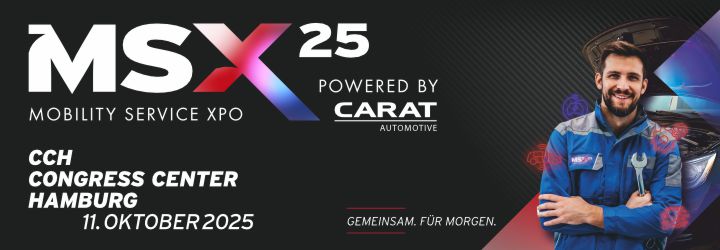Mobility costs money. The premium on speed of travel means faster modes of transport such as car or train are generally more expensive than slower modes such as bus.
As a result, households on low incomes spend a higher proportion of their income on transport, (shown by several studies (Footnotes 1 and 2). Furthermore, across many mature economies, car ownership is becoming prohibitively expensive for many people, and whilst lower and later take up of driving licences amongst the young has been observed for some time, a recent University of Michigan study found that even “the proportion of Americans ages 45-69 with driver’s licenses have declined overall since 2008, following a 25-year rise”. (Footnote 3) So can flexible and rapid mobility be anything other than an exclusive commercial offer?
Whilst it is true that big cities pay a price for slow travel times and so invest and subsidise fast and convenient public transport, public transport outside the biggest urban areas remains hampered by lack of frequency and network density. Even within large cities (Footnote 4), the traditional infrastructures are very inflexible and slow for many who live away from major routes, and those looking for faster and more flexible travel can only choose taxis if they can afford them. Furthermore, the balance of lower incomes appears to have shifted to the suburbs; a US study found that “today more Americans live below the poverty line in suburbs than in the nation’s big cities ”. This shift of poverty to the suburbs only adds to the mobility problem; a US study involving one hundred metropolitan areas found that within no-car households, under 50% of jobs were accessible within 90 minutes by those living in the city area, a figure that falls to below 30% for those living in the suburbs (Footnote 5). The result is not just higher transport costs for those on lower incomes, but also a resulting lack of social mobility; an ongoing study by a team at Harvard shows travel time as the “single strongest factor in the odds of escaping poverty (Footnote 6)”.
So how affordable are new alternatives to car ownership, taxis or public transport?
Let’s consider Uber, often cited as the affordable alternative to taxis; certainly, comparing standard rates, Uber rides appear 37% cheaper than London black cabs (Footnote 7), although this ignores ‘surge’ pricing, where during more busy periods, the Uber prices increase. A study commissioned by Uber that included surge pricing, recruited participants to compare taxi and Uber rides taken from lower-income neighbourhoods in Los Angeles, and found that on average that the Uber rides were “less than half the price of taxis and arrive in less than half the time (Footnote 8)”. However, Uber has yet to make a profit, and is effectively subsidising transport as it creates the market. And costs are likely to rise as the service matures and meets local regulation: Uber has reportedly recently increased fees from driver’s fares from 20% to 30% and passed on the costs of background checks and safety education directly to its drivers “through the so-called safe rides fee (Footnote 9)”. And whilst Uber offers UberShare (where users share rides to reduce price), the Uber offer itself is rarely widely available outside metro areas, and sharing becomes problematic in less dense suburbs as a result of fewer compatible journeys. Worse still, the impact on journey times worsens for ride-sharers as the distance increases between pick-up and drop-off of fellow travellers.
Carmakers may also have a role to play. Many car brands are already on the journey from manufacturers to service providers. Clearly some OEMs will want to continue to make theirs an aspirational and exclusive product. That’s part of the point of the offering. But in a world where car ownership is often not the most cost effective solution, most carmakers are looking at new models of use. Ford in the US are running a pilot in Texas that offers a two-year shared new car lease to up to six family members and friends (‘Ford Credit Link’) (Footnote 10). Extending this micro-fleet lease concept to used cars may be one way to help bring affordable and flexible transport to many more.
Other forms of on-demand transport are on the horizon. Spring 2017 will see the UK launch by MAAS (Mobility as a Service) of Whim, an app and account based platform which, “will integrate public transport, rental cars, taxis, trains, bikes and more to take people door to door as easily as possible (Footnote 11)”. Transport authorities and providers outside the West Midlands pilot area will be watching, as the UK MAAS catapult aims to reduce transport costs for the customer, and highlights the opportunity to “support the redistribution of government mobility subsidy” (Footnote 12). Carsharing remains another cost-saving travel option where available for those that can drive, although many carsharing offers, in isolation, do not actually lend themselves that well to the patterns of affordable commuting. The prospect of driverless cars, available on-demand, would be life changing for those that do not have a licence or cannot drive – children, and people of all ages with a range of impairments or disabilities. On-demand autonomous cars are probably more than a couple of years away, but even when such a service eventually arrives, it may be a very long time before the offering is genuinely affordable to all, although there clearly is a case for subsidy here, and in the UK at least, a recent survey suggests that public support would exist for such a move (Footnote 13).
Addressing mobility and access to car use amongst lower incomes is likely to become a bigger challenge as new mobility concepts permeate the mainstream. Connectivity is increasingly blurring the boundaries between private and public transport, at the same time exposing the gap between premium services and the rest, raising questions about access, cross subsidy and the role of public investment. And whilst access to mobility is clearly a public policy issue, and so beyond the immediate remit of automotive distribution, thinking about such issues could help OEMs and other providers expand their reach beyond traditional new car buying groups and fleet users. Indeed, focusing on the wealthier metro areas with large populations may tip more new car buyers into sharing, whilst offering solutions for more suburban areas and poorer demographics, who at best today may buy used, may increase the customer base. There’s an opportunity here for new business, even if it is a challenging one, and fraught with the risks of cannibalisation of sales.
Putting all the pieces of the puzzle together, the best commercial opportunity and the optimal public policy solution may be to embrace the blurring of the boundaries between public and private transport, through combining the economics of the two worlds. Public subsidy plays an accepted and pivotal role in maintaining access to traditional public transport, and may well have a role to play here in broadening the mobility offer. An all-modes platform such as MAAS, (Mobility As A Service), would be a suitable mechanism by which the public sector could subsidise a proportion of personal mobility accounts – for example, those on lower incomes wishing to make commuting more realistic, those in less accessibAn all-modes platform such as MAAS, (Mobility As A Service), would be a suitable mechanism by which the public sector could subside a proportion of personal mobility accounts – for example, those on lower incomes wishing to make commuting more realistic, those in less accessible areas, and those with impairments or disabilities – rather than just public modes of transport. Bringing more customers and districts into the on-demand network should have the effect of improving coverage, availability, utilisation rates and costs per ride. The commercial opportunity here may therefore be a hybrid of public and private transport, with all the complexities that may bring. But by taking customers from both traditional public and private transport, the network provider in such a scenario wins in both public and private markets whilst providing mobility for all.
WRITTEN BY BEN WALLER
- nhts.ornl.gov/briefs/PovertyBrief.pdf
- www.ucl.ac.uk/transport-institute/pdfs/transport-poverty
- www.umtri.umich.edu/what-were-doing/news/more-americans-all-ages-spurning-drivers-licenses
- www.brookings.edu/wp-content/uploads/2016/07/confrontingsuburbanpoverty_samplechapter.pdf
- www.brookings.edu/wp-content/uploads/2016/06/0818_transportation_tomer.pdf
- www.nytimes.com/2015/05/07/upshot/transportation-emerges-as-crucial-to-escaping-poverty.html?abt=0002&abg=1&_r=2&pagewanted=all
- www.telegraph.co.uk/technology/uber/11902613/Proof-that-Uber-costs-less-than-black-cabs.html
- newsroom.uber.com/new-study-finds-uber-cheaper-faster-more-reliable-for-lower-income-neighborhoods-in-la/
- www.theguardian.com/commentisfree/2016/jan/31/cheap-cab-ride-uber-true-cost-google-wealth-taxation
- fortune.com/2016/04/08/ford-group-leasing-austin/
- www.itsinternational.com/sections/general/news/transport-for-west-midlands-and-whim-set-to-pioneer-maas-in-the-uk/
- ts.catapult.org.uk/wp-content/uploads/2016/07/Mobility-as-a-Service_Exploring-the-Opportunity-for-MaaS-in-the-UK-Web.pdf
- www.fleetnews.co.uk/news/manufacturer-news/2016/12/30/british-drivers-think-self-driving-cars-will-deliver-most-benefit-to-the-disabled-and-the-elderly
Quelle: ICDP













